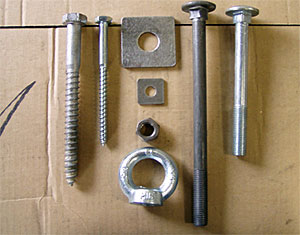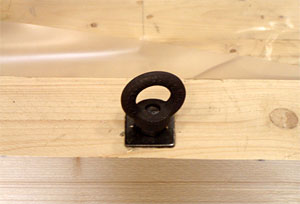Hexagon-head bolts (EN ISO 4016), cup-head square-neck bolts (ISO 8678) and threaded rods are used for bolted connections. Bolted connections are used for jointing lumber components, particularly on the floor of the box, and for securing technical packaged items to the floor of the box. The permitted loads on the bolts must be determined according to DIN 1052 2004-08. The key factors to be considered when dimensioning the connections for securing packaged goods to the floor are the horizontal acceleration values for the means of transport and handling equipment used. Processing notes The following aspects must be taken into account to achieve the best possibly quality for a bolted connection:
Table 11: Bolt dimensions

Figure 43: Bolts and screw elements Ring bolts are, for instance, used to secure the packaged item with ropes and belts. The ring bolts can be screwed onto the bolts of the end beams: 
Figure 44: Ring bolt on end beam |
| Top of pageContents |
